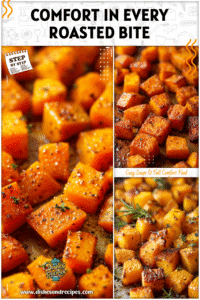Spaghetti squash is a wholesome, veggie-packed alternative to traditional pasta, loved for its light texture and naturally stringy strands. With just a quick saute in a skillet, this versatile squash transforms into a flavorful, low-carb base for countless meals. Adding fresh toppings like parsley, tomatoes, cheese, or lemon zest turns it into a colorful, vibrant dish that comes together in under 20 minutes. In this guide, you’ll learn exactly how to prepare and cook sauteed spaghetti squash like a pro. From baking techniques to topping ideas, this pasta squash recipe will become one of your favorite go-to weeknight dinners.

The First Time I Tried Sauteed Spaghetti Squash
The very first time I encountered spaghetti squash, I’ll admit I was skeptical. A vegetable that magically turns into “pasta-like strands” after cooking? It sounded too unusual to be true. I had picked one up at a local farmers’ market mostly out of curiosity, unsure if it would actually serve as a real substitute for pasta. Once baked, I remember scraping the fork through the bright golden flesh and watching it fall apart into delicate strands. That moment alone made it feel a little magical.
At first, I tossed the warm strands with just a bit of olive oil, sautéed garlic, and a sprinkle of fresh parsley. To my surprise, it wasn’t only satisfying but also felt lighter than a big bowl of pasta. The slight sweetness of the squash paired beautifully with the savory garlic and herbs. From that day forward, spaghetti squash became a regular guest in my kitchen—especially on nights when I wanted something comforting but not heavy. Sautéing it quickly in a skillet was the real game-changer: a fast cooking method that brought even more freshness and texture.
Why Spaghetti Squash Works for Quick Weeknight Meals
One of the best things about sauteed spaghetti squash is how approachable it is for weeknight cooking. Unlike heavier dishes, it’s a low-carb option that leaves you feeling nourished instead of weighed down. Once baked, the strands reheat and cook very quickly in a skillet—making it one of the simplest answers to the question of how to eat spaghetti squash in everyday meals.
It’s also endlessly versatile. You can keep it light with olive oil and lemon juice, or dress it up with easy spaghetti squash toppings like cherry tomatoes, basil, parmesan, or even feta for a Mediterranean twist. Because it works well with a variety of flavors, it’s a pasta squash recipe that adapts to whatever fresh ingredients you already have on hand. Whether you’re meal prepping for the week or pulling together something in a hurry, sauteed spaghetti squash is a colorful, tasty, and time-saving solution for busy weeknights.
How to Bake a Spaghetti Squash Before Sauteing
Before spaghetti squash hits the skillet, it needs a quick roast or bake to soften the flesh and create those signature strands. While some people may feel intimidated by cutting into the squash, the process is actually simple once you know a few tricks.
- Choose the right squash – Look for a firm spaghetti squash with a smooth, yellow skin and no soft spots. Medium-sized squashes are easier to handle.
- Cutting safely – Use a sharp chef’s knife to slice the squash lengthwise from top to bottom. If the skin feels too tough, microwaving the whole squash for 3–4 minutes will soften it slightly, making it easier to cut.
- Scoop out the seeds – Using a sturdy spoon, remove the seeds and pulp from the center, much like preparing a pumpkin.
- Season and bake – Lightly brush the cut sides with olive oil and sprinkle with salt and pepper. Place the halves cut side down on a baking sheet lined with parchment paper.
- Roast until tender – Bake in a preheated oven at 400°F (200°C) until the flesh is fork-tender and the edges begin to caramelize.
| Spaghetti Squash Size | Approx. Bake Time (400°F) |
|---|---|
| Small (1.5–2 lbs) | 30–35 minutes |
| Medium (2–3 lbs) | 35–40 minutes |
| Large (3–4 lbs) | 40–50 minutes |
Allow the squash to cool slightly before handling—it will be very hot right out of the oven.
Scooping and Creating the Perfect Strands
Once the squash has baked, it’s time for the fun part: turning it into spaghetti-like threads. Simply use a fork to scrape along the length of the squash, pulling gently to release strands of golden flesh. The key is not to over-scrape or mash the strands, as that can lead to a mushy texture. Instead, fluff them lightly with a fork for long, pasta-like ribbons.
If you’re wondering how to eat spaghetti squash for the best texture, this step is crucial. Overcooked squash can release too much water, but roasting until just tender and then sauteing quickly in a skillet prevents sogginess. Once the strands are ready, transfer them to a bowl and keep them loosely fluffed. They’re now perfect for sautéing with garlic, olive oil, or any fresh spaghetti squash toppings you’d like to add later.
By handling the squash carefully at this stage, you ensure a light, vibrant base that behaves beautifully in the frying pan, ready to soak up flavors without turning watery.
Quick Sauteed Spaghetti Squash Method
Once your spaghetti squash has been roasted and fluffed into strands, it’s ready to shine in the skillet. Sauteing is the easiest way to add big flavors in a short amount of time. All you need are a few simple ingredients and a sturdy pan.
Ingredients
- 4 cups baked spaghetti squash strands (from 1 medium squash)
- 2 tablespoons olive oil (extra virgin preferred)
- 2 garlic cloves, minced
- ¼ teaspoon red pepper flakes (optional)
- Salt and black pepper to taste
- 2 tablespoons fresh parsley, chopped
Tools
- Large skillet or sauté pan
- Wooden spoon or spatula
- Measuring spoons
Method
- Heat the olive oil in a large skillet over medium heat.
- Add the minced garlic and red pepper flakes, cooking for 30–60 seconds until fragrant.
- Add the prepared spaghetti squash strands, tossing to coat in the oil.
- Saute for 3–5 minutes, stirring occasionally. The strands should warm through but remain light and separate.
- Season with salt and black pepper.
- Finish with fresh parsley before serving.
This simple method lets the natural sweetness of the squash combine with garlic and oil, creating layers of flavor in minutes. It’s a foundation you can build on with all kinds of toppings.
Topping Ideas for Serving
- Classic Italian style: Parmesan, fresh basil, and lemon juice.
- Mediterranean: Kalamata olives, cherry tomatoes, feta, olive oil.
- Garden fresh: Zucchini, bell peppers, or spinach.
- Protein boost: Grilled chicken, shrimp, or mushrooms.
- Bright & tangy: Lemon zest, toasted pine nuts, goat cheese.
Think of spaghetti squash toppings like pasta’s lighter sibling—the flavors you love for pasta translate perfectly but feel fresher and brighter.
FAQs
1. Can you saute spaghetti squash without baking it first?
Yes, you can microwave or steam it, but baking provides better flavor and texture.
2. How do you make spaghetti squash not watery?
Roast cut side down until just tender, then drain or rest the strands briefly before sauteing.
3. What toppings taste best with pasta squash?
Parsley, parmesan, cherry tomatoes, feta, olives, lemon zest, and proteins make great additions.
4. How long does cooked spaghetti squash last in the fridge?
3–4 days stored in an airtight container. Reheat gently.
5. Can spaghetti squash replace pasta in most recipes?
Yes, though it has a sweeter, crunchier texture suited best for lighter sauces and fresh toppings.
Conclusion
Sauteed spaghetti squash with fresh toppings is the ultimate quick, nourishing meal. It’s low in carbs, full of flavor, and comes together in under 20 minutes. Whether you keep it simple with garlic and parsley or dress it up with Mediterranean ingredients, this pasta squash recipe adapts beautifully to your taste. With endless topping ideas and a naturally bright flavor, spaghetti squash proves that healthy can also be vibrant, satisfying, and fun. Experiment with your favorite vegetables, cheeses, or proteins—you might just discover your next weeknight staple.














